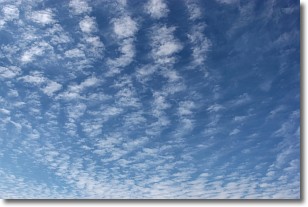Weather Alert in Iowa
Flood Watch issued June 25 at 9:18PM CDT by NWS Quad Cities IA IL
AREAS AFFECTED: Linn
DESCRIPTION: ...The Flood Watch continues for the following rivers in Iowa... Cedar River at Vinton affecting Benton County. Cedar River AT Palo Blairs Ferry Rd affecting Linn County. ...The Flood Watch is extended for the following rivers in Iowa... Cedar River at Cedar Rapids affecting Linn County. Cedar River near Conesville affecting Muscatine and Louisa Counties. Cedar River at Cedar Bluff affecting Muscatine, Cedar and Johnson Counties. * WHAT...Flooding is possible due to rounds of thunderstorms and locally heavy rainfall. * WHERE...Cedar River at Cedar Rapids. * WHEN...From late Sunday night until further notice. * IMPACTS...At 14.2 feet, Water affects the lowest sections of C Street SW near Prairie Creek. * ADDITIONAL DETAILS... - At 9:00 PM CDT Wednesday the stage was 10.4 feet. - Forecast...Flood stage may be reached early Monday morning. - Flood stage is 12.0 feet.
INSTRUCTION: If you are in the watch area, remain alert to possible flooding. Stay tuned to further developments by listening to your local radio, television, or NOAA Weather Radio for further information. The next statement will be issued by Thursday evening at 930 PM CDT.
Want more detail? Get the Complete 7 Day and Night Detailed Forecast!
Current U.S. National Radar--Current
The Current National Weather Radar is shown below with a UTC Time (subtract 5 hours from UTC to get Eastern Time).

National Weather Forecast--Current
The Current National Weather Forecast and National Weather Map are shown below.

National Weather Forecast for Tomorrow
Tomorrow National Weather Forecast and Tomorrow National Weather Map are show below.

North America Water Vapor (Moisture)
This map shows recent moisture content over North America. Bright and colored areas show high moisture (ie, clouds); brown indicates very little moisture present; black indicates no moisture.

Weather Topic: What are Altocumulus Clouds?
Home - Education - Cloud Types - Altocumulus Clouds
 Next Topic: Altostratus Clouds
Next Topic: Altostratus Clouds
Similar to cirrocumulus clouds, altocumulus clouds are
characterized by cloud patches. They are distinguished by larger cloudlets
than cirrocumulus clouds but are still smaller than stratocumulus clouds.
Altocumulus clouds most commonly form in middle altitudes (between 2 and 5 km)
and may resemble, at times, the shape of a flying saucer.
These uncommon formations, called altocumulus lenticularis, are created by uplift
in the atmosphere and are most often seen in close proximity to mountains.
Next Topic: Altostratus Clouds
Weather Topic: What are Cirrocumulus Clouds?
Home - Education - Cloud Types - Cirrocumulus Clouds
 Next Topic: Cirrostratus Clouds
Next Topic: Cirrostratus Clouds
Cirrocumulus clouds form at high altitudes (usually around 5 km)
and have distinguishing characteristics displayed in a fine layer of
small cloud patches. These small cloud patches are sometimes referred to as
"cloudlets" in relation to the whole cloud formation.
Cirrocumulus clouds are formed from ice crystals and water droplets. Often, the
water droplets in the cloud freeze into ice crystals and the cloud becomes a
cirrostratus cloud. Because of this common occurrence, cirrocumulus cloud
formations generally pass rapidly.
Next Topic: Cirrostratus Clouds
Current conditions powered by WeatherAPI.com




